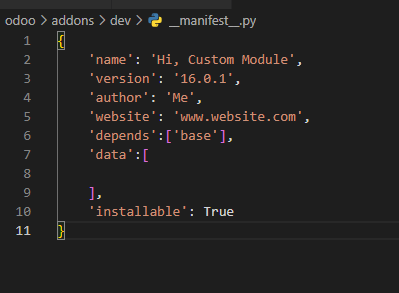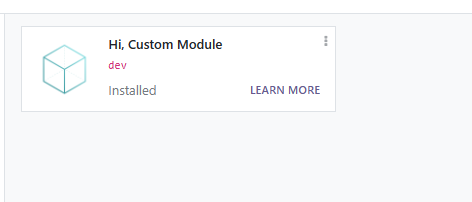Are you an owner or entrepreneur seeking to improve productivity, add unique features to your Odoo ERP system, or streamline operations? Maybe what you need is to create a bespoke Odoo module. Because of Odoo’s modular architecture, custom functions made to fit your unique company requirements may be integrated with ease. We’ll guide you through the steps of making your very own Odoo module in this blog article.
Understanding the Basics
Before delving into the process of development, let us first clarify what an Odoo module is. A module in Odoo is a group of files that either enhances or improves the system’s built-in functionalities. These features might be anything from straightforward additions like extra fields to intricate features like system integration.
Setting Up Your Development Environment
First things first, make sure you have Odoo installed on your system. You can either install it locally or set it up on a server. Once Odoo is up and running, you’ll need a code editor to write your module’s code. Popular choices include VS Code, Sublime Text, or PyCharm.
Creating Your Module Structure
- Locate the “addons” directory within the file system. And within the “addons” directory, create a new folder called “dev”.

- Within the dev folder, create two files (__init__.py and __manifest__.py).

- Within your __manifest__.py file, write the metadata of your module such as name, version, dependencies, and description:

- After that, create a “models” directory with __manifest__.py inside it:

- Inside your __init__.py in the dev directory, call the “models” directory:

- Now start your odoo server, and go over to Apps, and press “Update Apps List” and click “Update”:

- Now, type and search the name of your custom module, and it should appear:

It’s time to test your module after you’ve developed the code for it. You can test the functionality of your module in a controlled setting with Odoo’s built-in testing framework. To make sure your module functions as intended, be careful to properly test every part of it. Remember to troubleshoot any problems that surface while testing.
You can deploy your module to your Odoo instance whenever you’re happy with it and it’s been extensively tested. Using Odoo’s integrated module management tools or manually installing the module will depend on how you have it set up.
Conclusion
Although building a custom Odoo module can initially appear overwhelming, it is completely doable with the correct support and tools. You will be well on your way to creating bespoke functions that precisely match your company requirements if you adhere to the methods described in this blog post. Why then wait? To fully utilize your Odoo ERP system, begin creating your own Odoo module right now. Have fun with coding.
